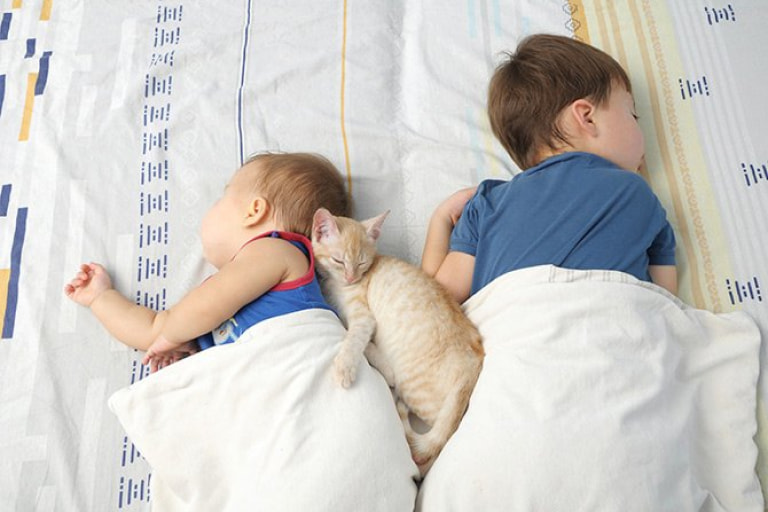The Basics of Sleep
Sleep needs vary by age, so your toddler (12 to 36 months of age) may only sleep between 12 and 14 hours daily (including two small naps, or one longer nap); however, the introduction of a new sibling may temporarily disrupt your eldest child’s sleep schedule.
Creating a Bedtime Routine
Place your little one in a safe, comfortable crib when baby begins to show signs of drowsiness—yawning, crying, eye rubbing—but, most importantly, while he or she is still awake. If you want your child to sleep through the night, he or she has to learn the skill of falling asleep (and falling back to sleep, if he or she awakens during the night) without assistance, so you must make sure that your baby is not asleep when entering the crib. This skill can take anywhere from a few days to a few weeks to master, and, although the process may be tear-filled (for both of you), the result will be less fragmented sleep for everyone in the home.
Your toddler most likely has a consistent bedtime routine in place—including slipping into Pull-Ups® Potty Training Pants to help him or her stay consistent with potty training both day and night—but adjustments may need to be made now that baby makes four. Your firstborn should continue to be placed in bed while awake at the same time each night to reinforce the importance of sleep, but feel free to add a new component into the bedtime routine to allow your toddler more quality time with you and to feel just as special as his or her new sibling.
If either child wakes during the night, have an agreed upon plan with your partner in place on how to handle the situation—perhaps you pop into your child(ren)’s room to reassure him or her that everything is alright, or maybe you choose to leave him or her to self-soothe. Any deviation from the plan, especially from one parent to another, will cause confusion for your child(ren) and may result in more sleep disruption.
By WhatToExpect.com









